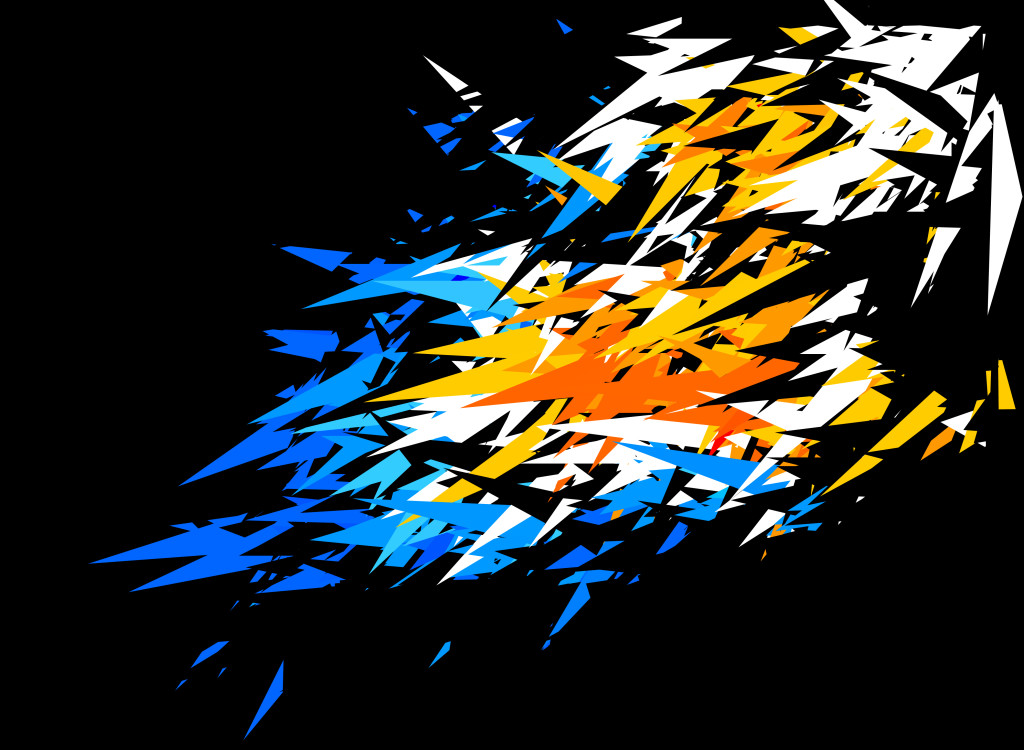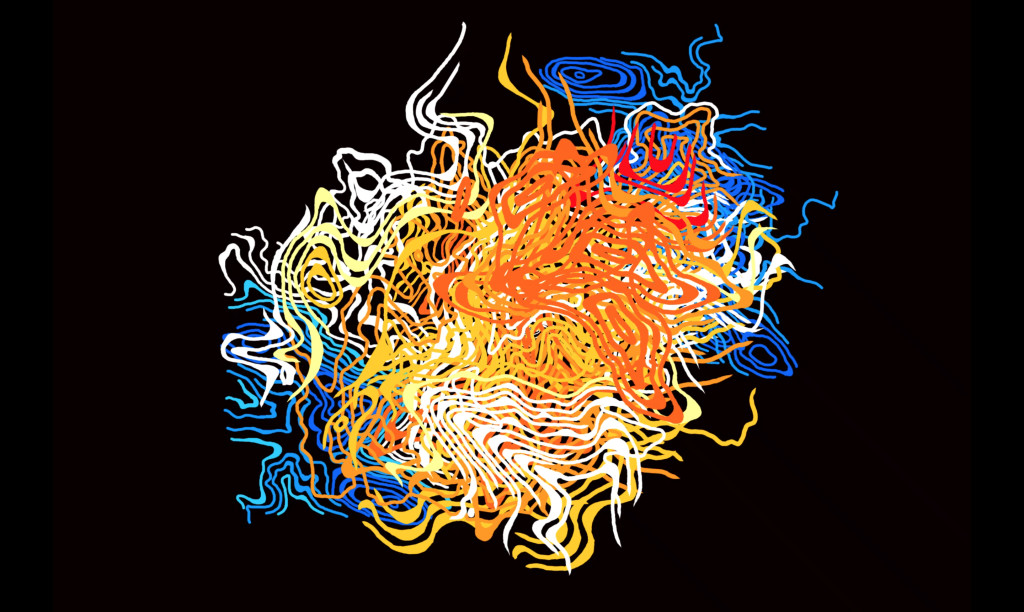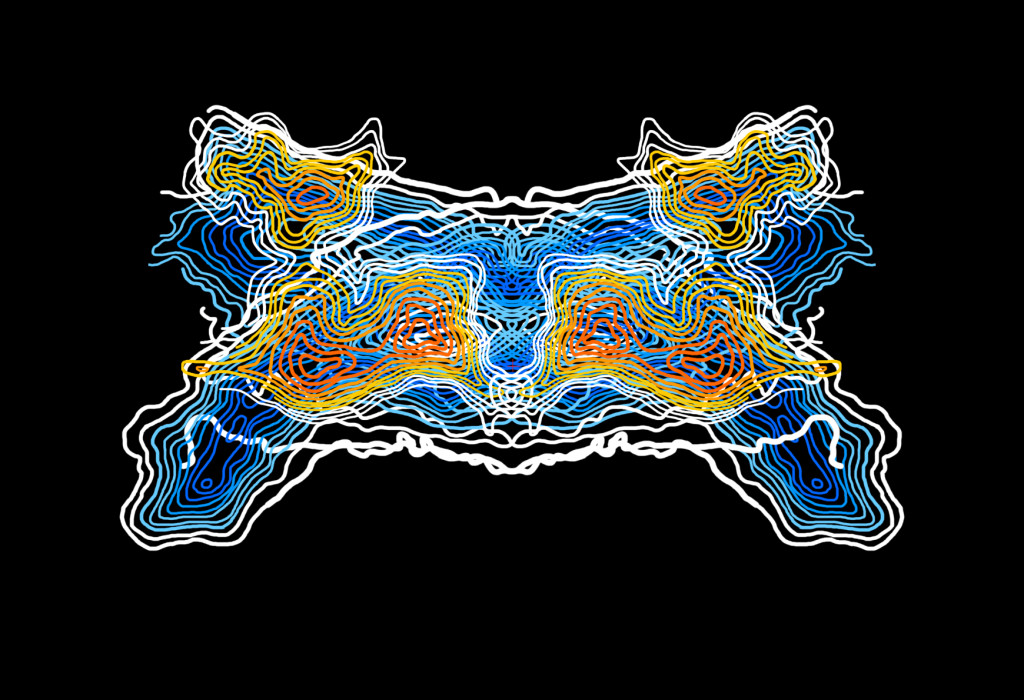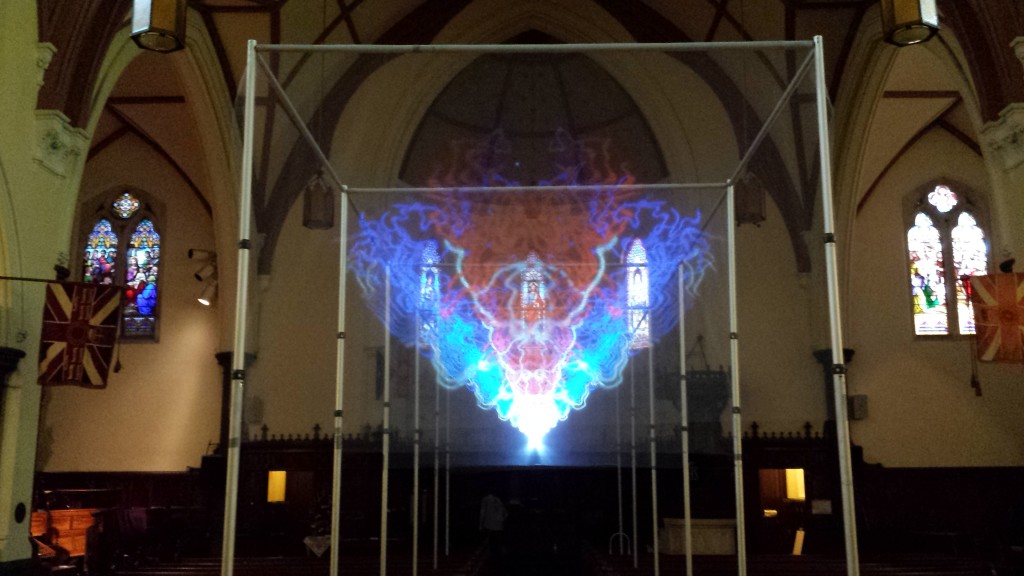Cartology Apology was debuted at White Night Melbourne 2016 (WNM page for work) where over 11,000 people were packed inside the beautiful Scot’s Church cathedral to view this disconcerting holographic audio/visual projection display of video art made of animated topographic lines of the greater Victorian area.
The Sydney Morning Herald and The Age called it one of the ‘gems’ of the festival, also calling it ‘trippy’ (see Publicity page), which I suppose it was – I morphed my topographical maps into kaleidoscopic imagery as part of a 45 minute looped frame-by-frame animation that shone into the 3m x 5m x 18m screen installation. It was also referenced on White Night’s official Wikipedia page as a special mention. It was not easy to set up this work inside a space filled with non-movable seating, but I managed to place it so that people could walk underneath it down the cathedral’s centre isle, to add to the audience’s experience of the work. Due to its holographic nature of 6 separate see-through screens, the look of the artwork is dependent on the angle from which it is viewed.
When I heard the White Night festival would show my work in this venue, I changed some of the colours of the artwork to mimic the venue’s vast array of stained-glass windows, making the work also look spectacular during the day despite projection pieces usually working best in the dark. At the time of writing this, small camera phone videos of the work have received viral attention on social media, and an official video of the work is soon to come…
Some more information on the thematic background to this work: this writing was included in the flier handed out for the artwork:
“Cartology Apology is a hyper-real, fantasy cartography-in-motion where old and new technologies combine. Inspired by the topographical nature of the Melbourne and greater Victoria area, it plays with moving frame-by-frame animation and bright colours drawn from topographical data, and experiments with how this might be represented in a 3D holographic environment.
This is a study of landscape, but also a re-imagined mapping, told from the point of view of a non-local, with all the political difficulties that concept brings to light. It is also a documentation of process – since it is frame-by-frame animation, you are watching hundreds of hours of the artist hand-drawing topographic lines.
The audio that you hear in this artwork is a mixture of sounds generated by the walking movement of visitors through the church, whisperings about walking the land, and footsteps recorded across the Victorian country-side.”
The process of making this work made me consider the concept of mapping in an Australian context – the differences between the maps of traditional peoples and white settlers, how we changed the landscape and continue to change it, and how this is indeed also a global issue. It made me realise that cartography is a fluid thing, even a subjective thing, and this was ultimately the realisation that I had to come to in order to feel confident in the notion that I was creating my own version of a cartography for the land. Did I have a right to do so? I only felt that I did when I considered that everyone has the right to their own interpretation of what a map is…

Image by Douglas Robertson




Cartology Apology Alinta Krauth

Cartology Apology Alinta Krauth

Cartology Apology during the day

Cartology Apology Alinta Krauth
